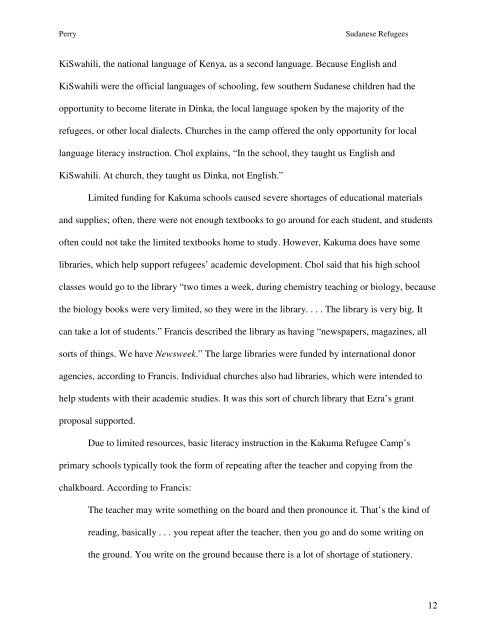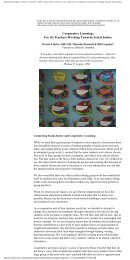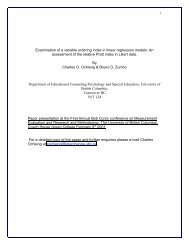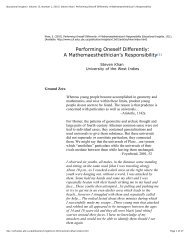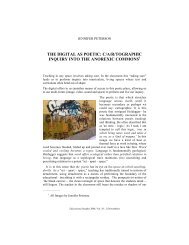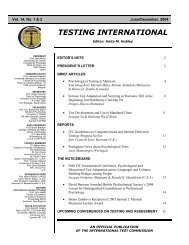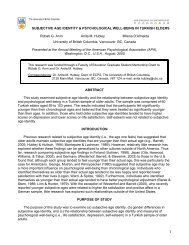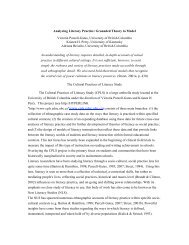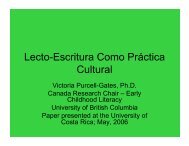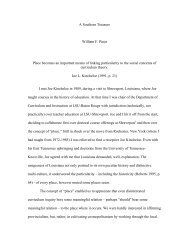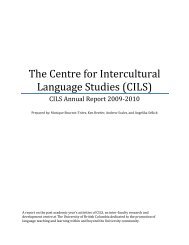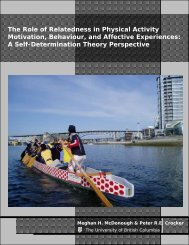Sharing Stories, Linking Lives: Literacy Practices Among ... - CPLS
Sharing Stories, Linking Lives: Literacy Practices Among ... - CPLS
Sharing Stories, Linking Lives: Literacy Practices Among ... - CPLS
You also want an ePaper? Increase the reach of your titles
YUMPU automatically turns print PDFs into web optimized ePapers that Google loves.
Perry Sudanese Refugees<br />
KiSwahili, the national language of Kenya, as a second language. Because English and<br />
KiSwahili were the official languages of schooling, few southern Sudanese children had the<br />
opportunity to become literate in Dinka, the local language spoken by the majority of the<br />
refugees, or other local dialects. Churches in the camp offered the only opportunity for local<br />
language literacy instruction. Chol explains, “In the school, they taught us English and<br />
KiSwahili. At church, they taught us Dinka, not English.”<br />
Limited funding for Kakuma schools caused severe shortages of educational materials<br />
and supplies; often, there were not enough textbooks to go around for each student, and students<br />
often could not take the limited textbooks home to study. However, Kakuma does have some<br />
libraries, which help support refugees’ academic development. Chol said that his high school<br />
classes would go to the library “two times a week, during chemistry teaching or biology, because<br />
the biology books were very limited, so they were in the library. . . . The library is very big. It<br />
can take a lot of students.” Francis described the library as having “newspapers, magazines, all<br />
sorts of things. We have Newsweek.” The large libraries were funded by international donor<br />
agencies, according to Francis. Individual churches also had libraries, which were intended to<br />
help students with their academic studies. It was this sort of church library that Ezra’s grant<br />
proposal supported.<br />
Due to limited resources, basic literacy instruction in the Kakuma Refugee Camp’s<br />
primary schools typically took the form of repeating after the teacher and copying from the<br />
chalkboard. According to Francis:<br />
The teacher may write something on the board and then pronounce it. That’s the kind of<br />
reading, basically . . . you repeat after the teacher, then you go and do some writing on<br />
the ground. You write on the ground because there is a lot of shortage of stationery.<br />
12


